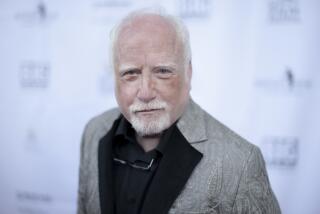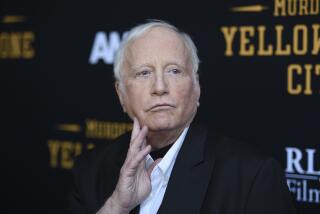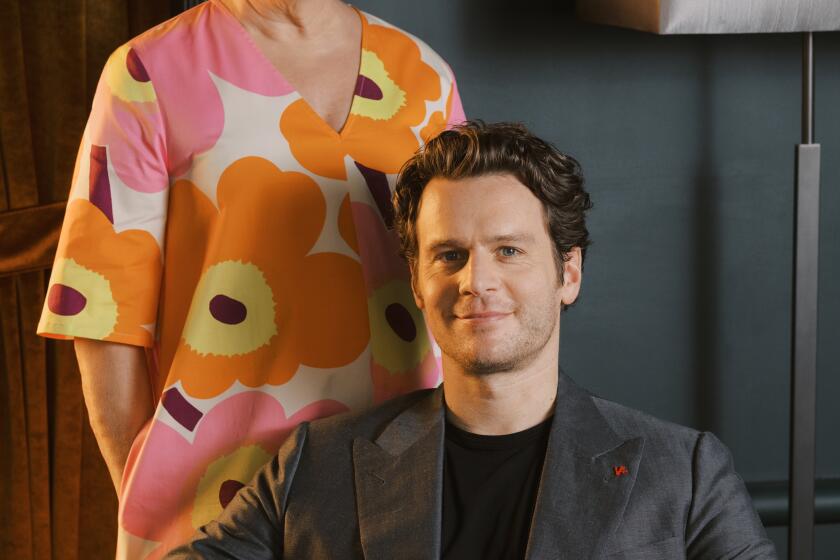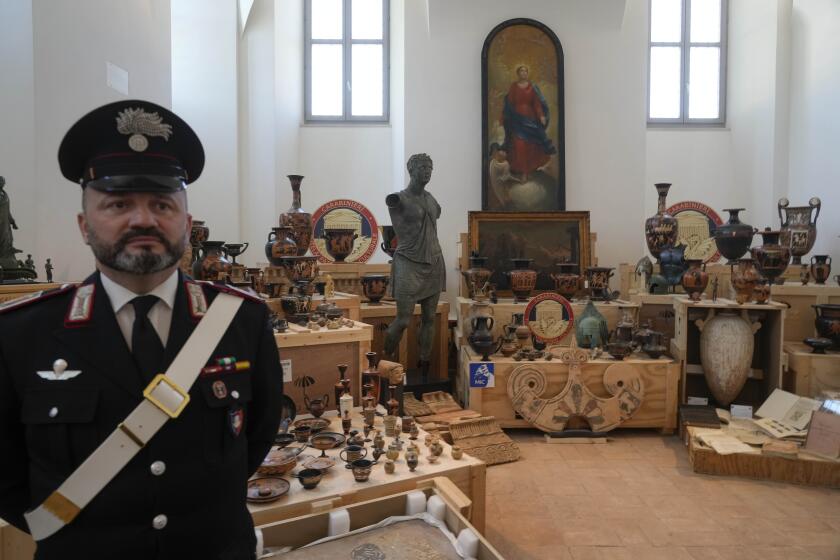‘Between’ an Artist and His Ideas
Victor Burgin is an artist, a Marxist, a Freudian and a theorist on the linkages between art, politics and the human mind. Between (Basil Blackwell Inc., 432 Park Avenue South, Suite 1505, New York, N.Y. 10016; $19.95) is Burgin’s explanation of himself, his art and his ideas--and it is a remarkably lucid and convincing document. I confess that it was Burgin’s sharp-edged, frankly erotic images that first caught my attention. But it was his clear and revealing prose that allowed me to penetrate the work in a way that few art theorists, and even fewer artists, ever enable us to do.
Burgin’s art takes the form of black-and-white photographs and short text blocks, usually displayed as a series of panels in a gallery, but sometimes rendered as street posters or magazine advertisements; his self-disclosures consist of Burgin’s own words, transcribed from a decade of letters, interviews and talks, as well as quotations from and allusions to Marx and Freud, Seurat and Sesame Street, James Joyce and John Cage, and other, more obscure sources of inspiration.
The earliest work reproduced in “Between” is what Burgin characterizes as “ ‘appropriated image’ work” in the form of “recycling advertising imagery and reproducing the rhetoric of advertising copy.” The best example is “Possession,” a street poster that depicts a fashionable young couple in a sensual embrace: “What does possession mean to you?” queries the text above the image. But at the bottom of the poster is Burgin’s didactic, double-edged message: “7% of our population own 84% of our wealth.”
Five hundred copies of “Possession” were posted in the streets of Newcastle on Tyne during summer of 1976: “The exercise was one of getting a certain message onto the street,” Burgin explains, “a pretty vulgar notion of how we can confront false consciousness with naked truth.”
But Burgin does not disdain the formal structures of artistic enterprise. To the contrary, he declares that the place for the militant artist is inside the institutions--”education, art, religion, advertising, and so on”--that shape the very consciousness of Western civilization in our age.
“In order that the status quo be maintained . . . the worker must grow up thinking, ‘Well, it’s a fair society, and if I work hard . . . then one day I’ll have a nice house and maybe go scuba-diving with that blonde just like in the Martini advert,’ ” Burgin writes. “Given this instrumentality, it becomes necessary to intervene within the ideological state apparatuses, which means intervening within . . . all . . . institutions, of which art is one.”
In other words, explains the tasteful revolutionary, “the scenario is not that we have the revolution first: blood coursing through the gutters, capitalists swinging from the lamp-posts, and then we raise the red flag over the Tate and the Hayward, but that we struggle every day within the institutions within which we work.”
“Between” reveals that Burgin is too thoughtful, too sensitive, and too civilized to reduce his art or his artistic theory to mere agitprop. In fact, his later work and writings suggest that he is less interested in dialectical materialism of Marx than in the self-absorption and the sexual ponderings of Freud. In “The Bridge,” an homage to Hitchcock’s “Vertigo,” and “Office at Night,” a work in progress that plays on Edward Hopper’s painting of the same title, Burgin is attempting to render the most profound and complex notions of reality and identity in a series of iconic images and emblematic text.
“When I went to art school, I was taught to appreciate the ‘formal’ aspects of an image--such things as the relative disposition of main elements, contrasts of size and shape, line and tonality, and so on,” Burgin writes. “Today I’m interested in a different understanding of form; for example . . . the formal structures Freud described in terms of the ‘dream-work.’ ”
Thus, he explains, his meticulously crafted words and images “may contain banal and apparently insignificant elements which, although they receive little or no conscious attention, may nevertheless activate pre-conscious and/or unconscious chains of association.” And he is willing to decipher his intended meanings--to psychoanalyze himself as an artist--in a way that I have often wished other writers and artists would consent to do.
Burgin’s manifesto defines the role of the artist in expansive and even cosmic terms without ever losing sight of the psychic and socioeconomic realities that provide the artist with his vocabulary of images and values.
“What I’m urging here is that we distinguish between the representation of politics and the politics of representation ,” Burgin declares. “A politics of representation has to be concerned with the phantasmatic. . . . We don’t simply inhabit a material reality, we simultaneously inhabit a psychic reality--the former, in fact, being ‘known’ only via the latter.”
Thus, he concludes, psychic reality--”the register of the subjective, of emotion (including, of course, pleasure)”--is more important in the work of the artist than “the political issues of the day, the fetished ‘real struggles.’ ”
More to Read
The biggest entertainment stories
Get our big stories about Hollywood, film, television, music, arts, culture and more right in your inbox as soon as they publish.
You may occasionally receive promotional content from the Los Angeles Times.






